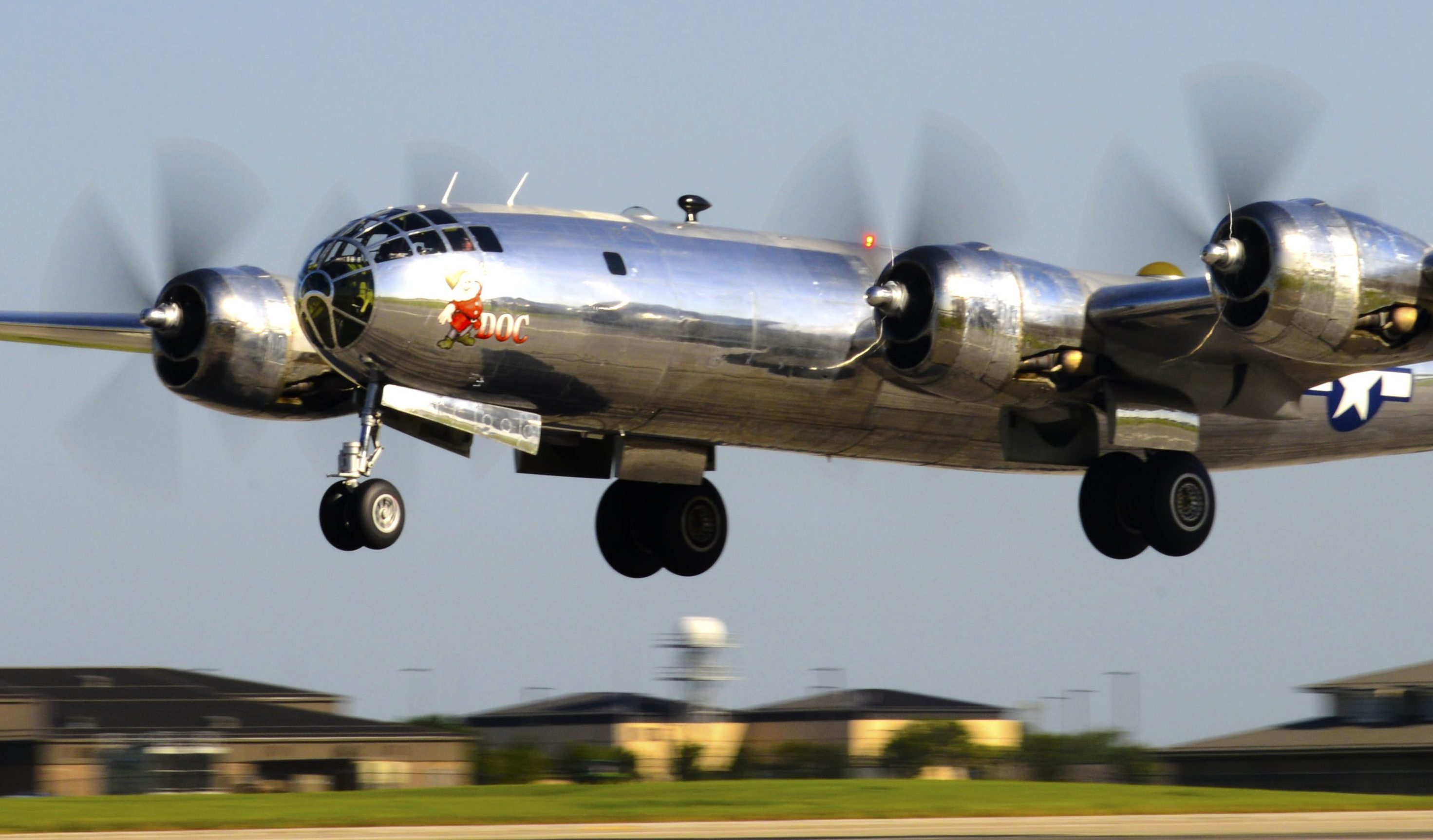75 years ago today the first atomic bomb was dropped on Hiroshima.
It was dropped by a B29 Superfortress – a plane that was literally built in parallel with the Manhattan Project to develop the bomb, and cost as much to bring into service and was in many ways more difficult to get built than the bomb itself.

As troubled by development problems and cost overruns as most other procurement projects today – early versions had an alarming tendency for engine fires to melt the wing spar, causing wings to break off and the plane to go into an uncontrollable spiral – but carried into action on a wave of wartime emergency money, the Army Air Force brass were seriously worried that the Superfortress would be ready to do the job.
Worried enough to come up with an alternate plan, with the only other plane in the world that could have carried the two early, huge atomic bombs.
Here’s the story.
By the way – if you’re a history geek, “Mark Felton Productions” is a treasure trove of the sort of history you just don’t get in most history books – the kind of off-the-beaten-path stories First Ringer and me focused on in our “World War 2 – Fact and Myth” series, way back when. It’s very much worth a watch.

“War is hell.” Dropping this demon of a bomb was horrible but necessary. God save those who made this decision. God save those who suffered its effects.
Indeed, the greatest generation. Salut!
I am personally quite happy the bomb was dropped, and not just because it saved millions of Japanese from death in the inevitable US invasion. The experience on Okinawa showed the Army war planners even the official 1M US casualties was on the low side of what may well have happened. The Navy, meanwhile, believed that between 1.4 and 4 million US casualties was closer to the mark, with up to 800K dead. (Strange fact: the Navy was probably more right than most folks realize. We lost more Navy folks than Army folks at Okinawa, so the Navy probably had a better hand on what the toll would be on the invasion fleet.) They estimated that Japanese casualties would be 10M.
To those who say how horrible the bombs were, I say that they actually saved lives in the end, because as we all know there was a nearly successful coup that tried to keep the war going even after the Emperor’s surrender.
On a personal level, my grandfather, who was in his 40s at the time and had initially been rated 4-F for medical reasons, was scheduled for induction just after the bomb was dropped.
But I heartily endorse Mark Felton’s channel. I’ve been following that for months and have some seen some real gems on it. It’s hard to surprise me on WW2 subjects, but he’s done it more often than any other YouTube channel I’ve seen.
DOC is one of two. The other being FiFi.
DOC paid St Paul a visit last year and I was able to go for a ride. Sure was a lot of fun. 🙂
Damned straight on that.
I would also recommend TimeGhost by Indy Neidell
Truman did the right thing.
He saved millions of Japanese, Chinese, Korean, American & southeast Asian & Pacific Islander lives.
The history revisionists often forget that more people died in the firebombing of Tokyo than either Hiroshima or Nagasaki.
Nuclear weapons were a statement the next step in the war was going to be annihilation. The firebombings were not understood, but the atomic bombings were, in large print that even Tojo would understand.
Is a mine and submarine campaign followed by an invasion more ‘humane’ than a sudden bomb? I think not.
The history revisionists often forget that more people died in the firebombing of Tokyo than either Hiroshima or Nagasaki.
Yep.
There were in fact many episodes that killed more civilians than Hiroshima and Nagasaki: the firebombings of Hamburg, (likely) Dresden, the siege of Leningrad, the battles of Kiev, Odessa and Stalingrad, the liberation of Manila, and I’m probably forgetting a few.
Singling out Hiroshima and Nagasaki is easy – the mass death in an instant as opposed to one by one slaughter or slow starvation was new. And ignoring the inevitable carnage that would’ve attended Operation Olympic is just plain dishonest.
In his autobiography, Elian “He named names” Kazan says that the American and Japanese soldiers in the Pacific were consumed by hatred for one another. Kazan was in the Philippines in ’44 doing film work for the military; he claims that atrocities were committed by both sides, usually involving burning people alive.
If we had more than two bombs, we probably would have used ’em.
Fate, or something like it, seems to have been behind the development of atomic weapons. They require massive industrial and political and economic capital to build from scratch. Only the US, in the 1940s, had the resources to do this. If not for World War Two, they would likely remain on the drawing board.
Disney made a propaganda film in 1943 called _Victory Through Air Power_. In graphic terms it described the effect of so-called “earthquake bombs” then being developed for the air force, that would devastate entire cities, cause firestorms and kill tens of thousands of civilians. This was considered family entertainment during World War Two.
Estimated kiloton yield
1995 Oklahoma City bombing 0.002kt
2015 Tianjin explosions 0.34kt
2020 Beirut port explosion 1.5kt
1917 Halifax explosion 2.9kt
1945 Hiroshima 15kt
~ Statista Research